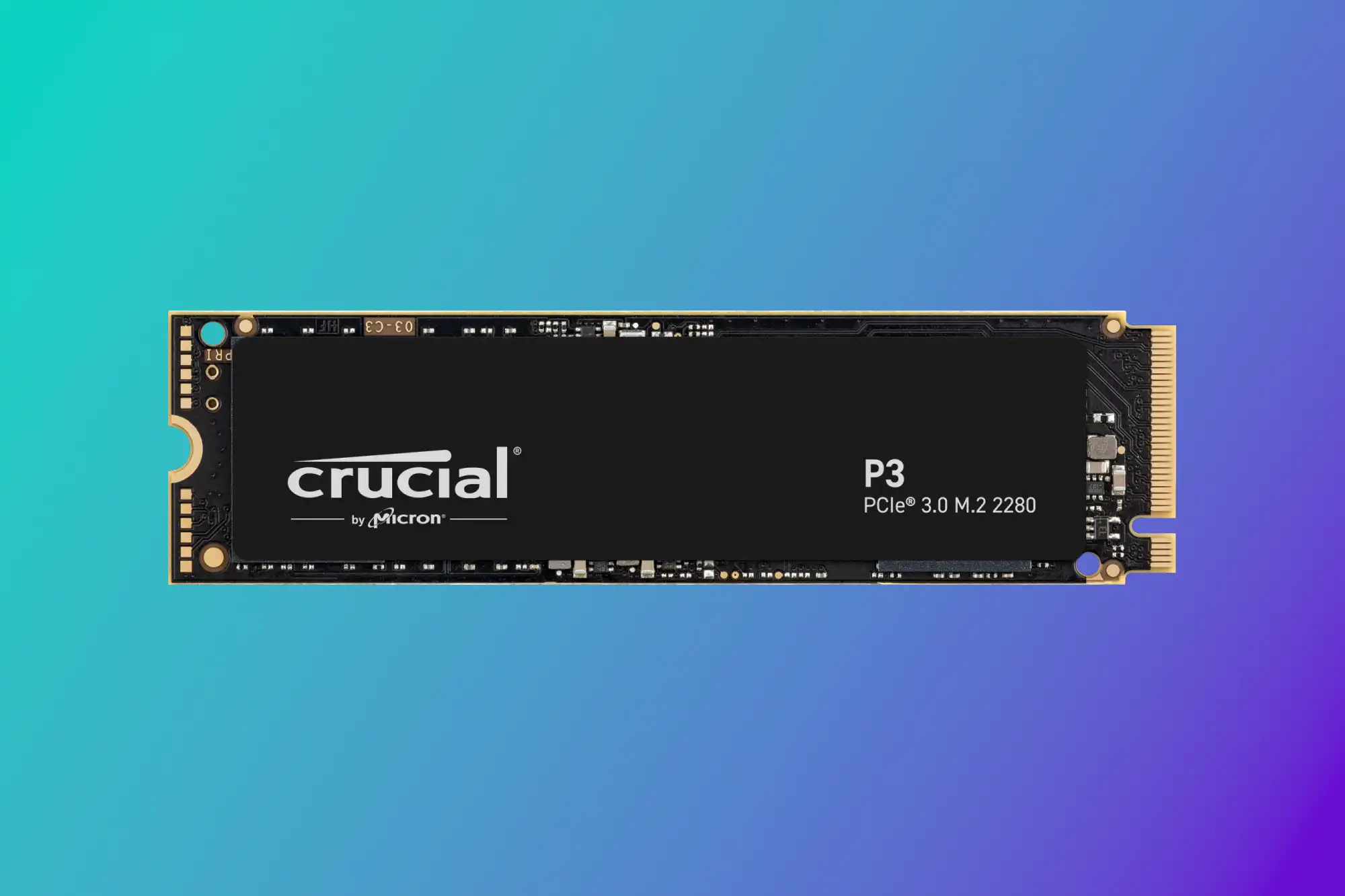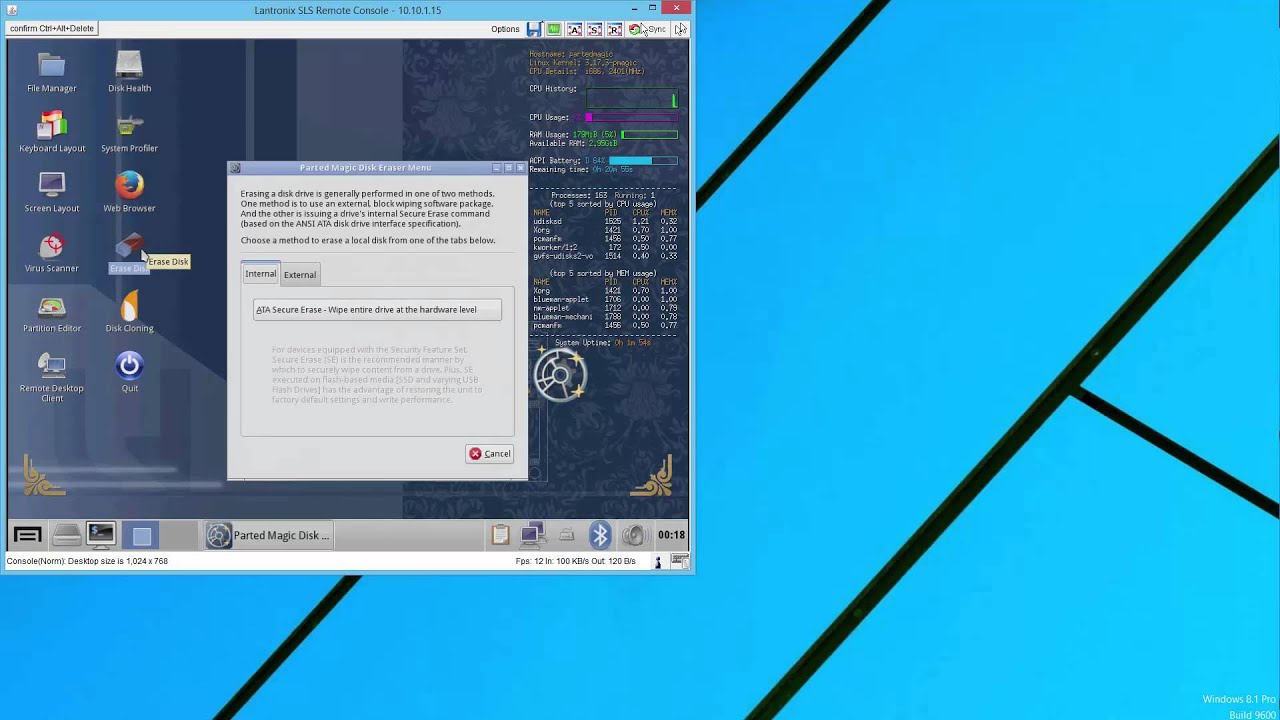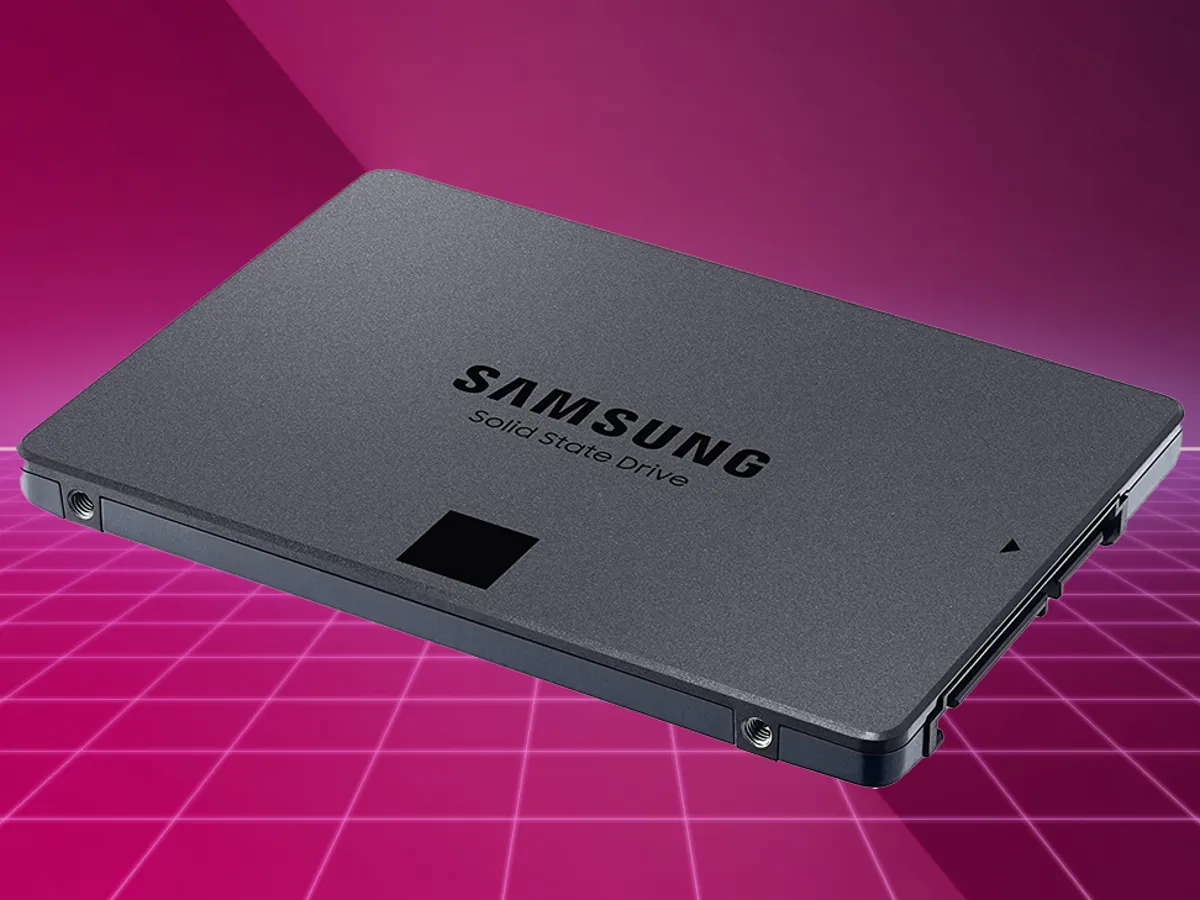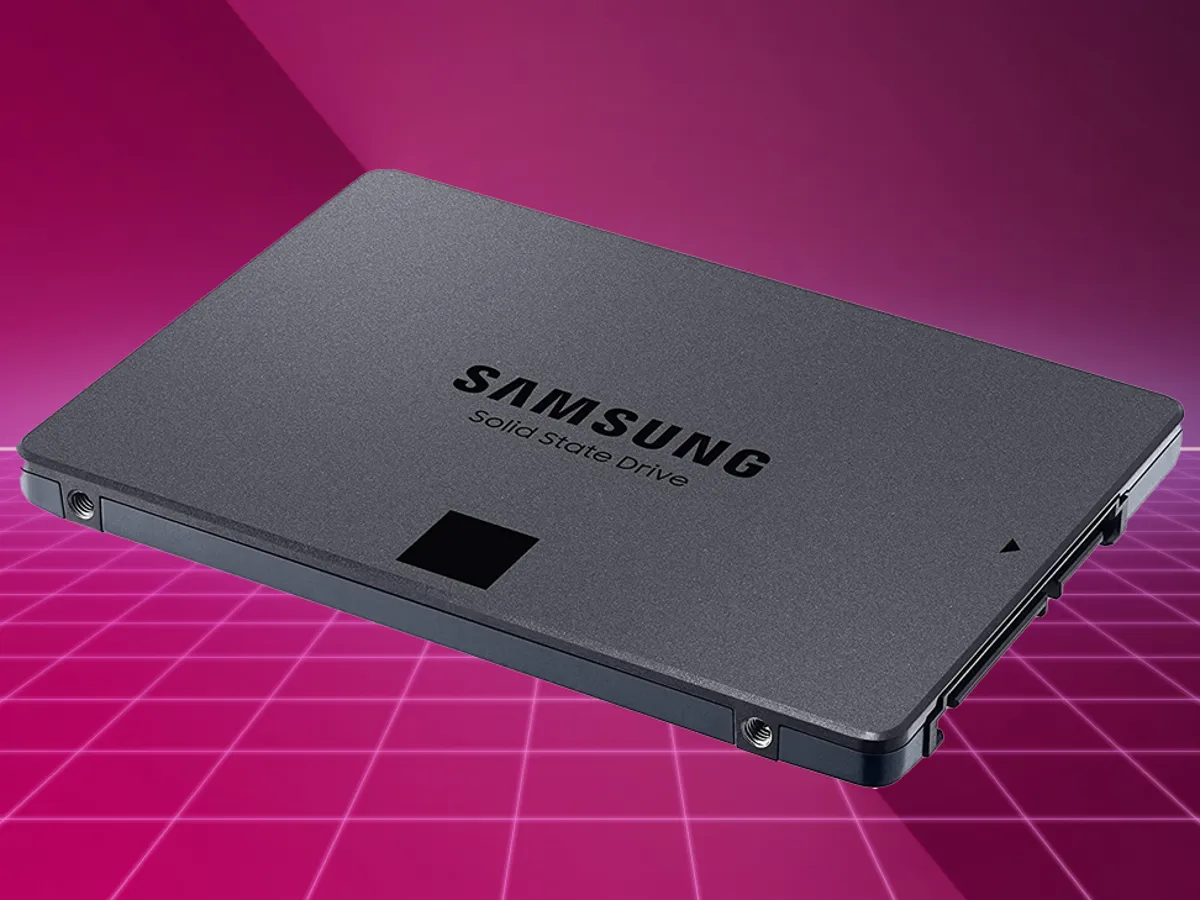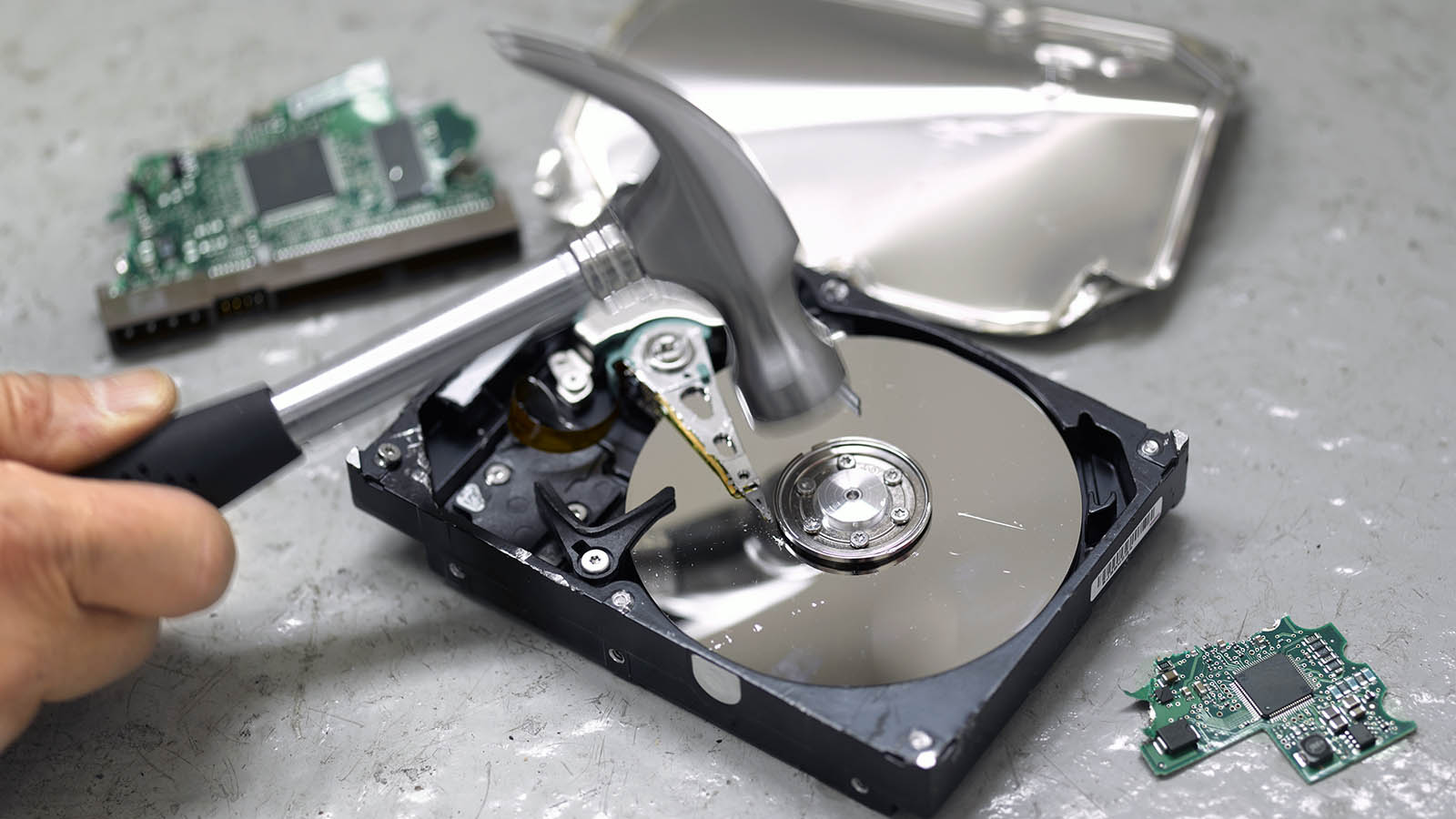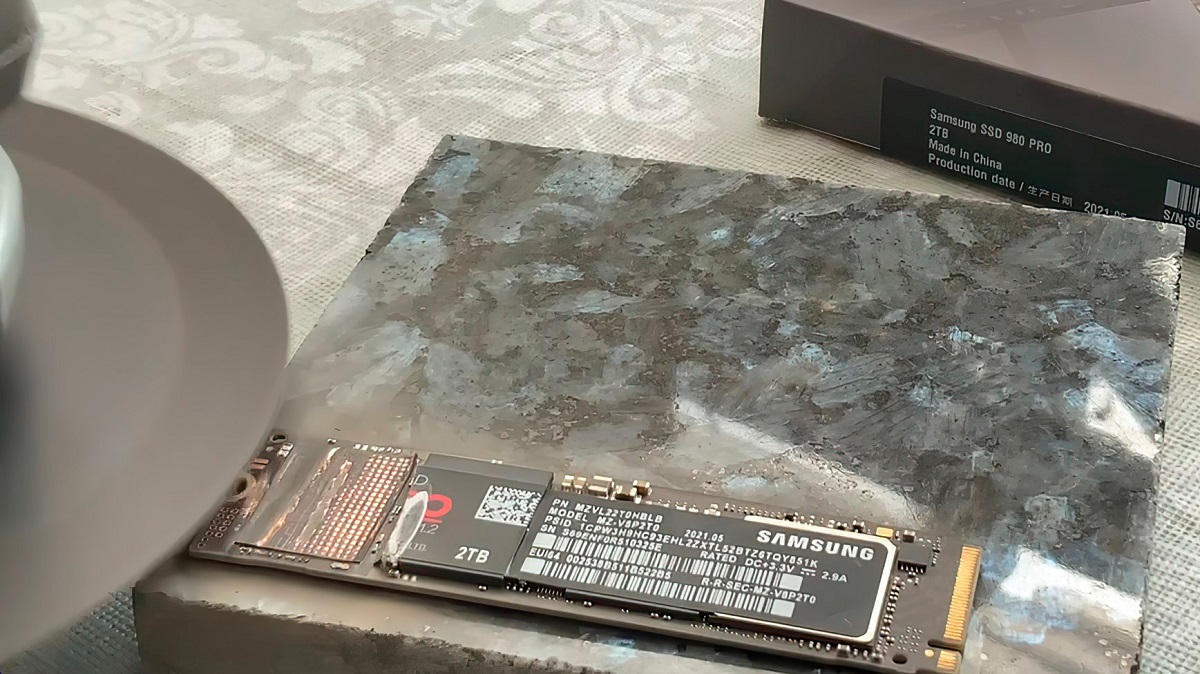Introduction
Welcome to our guide on how to securely wipe an SSD. In today’s digital age, data privacy and security have become paramount concerns for individuals and organizations alike. When it comes to disposing of or repurposing solid-state drives (SSDs), it’s crucial to ensure that all sensitive data stored on them is completely erased and cannot be recovered.
But why is securely wiping an SSD different from traditional hard drives? Unlike mechanical hard drives, SSDs store data on flash memory chips. These chips use a process called wear leveling, which distributes data across various memory cells to ensure equal wear and prolong the lifespan of the drive. While this technology improves performance and durability, it also presents a challenge when it comes to securely erasing data.
Securely wiping an SSD involves not only deleting the files but also overwriting the entire drive with random data multiple times. This process ensures that even the most advanced data recovery techniques cannot retrieve any remnants of the original information.
In this guide, we will explore various methods to securely wipe an SSD and safeguard your sensitive data. We will discuss using built-in secure erase tools, utilizing third-party software, and physically destroying the SSD. Each method has its own advantages and considerations, so it’s important to choose the right approach based on your specific needs and circumstances.
Before we dive into the different methods, it’s crucial to note that securely wiping an SSD is irreversible. Once the data is erased, it cannot be recovered. Therefore, it is essential to back up any important files or data before proceeding with the secure wipe process.
Now that we understand the importance of securely wiping an SSD, let’s delve into the various methods available to ensure the complete eradication of data from your solid-state drive.
What is a secure wipe?
A secure wipe, also known as data sanitization or data erasure, is a process that ensures all data stored on a storage device is completely removed and cannot be recovered. In the context of SSDs, secure wiping involves overwriting the entire drive with random data multiple times to ensure the permanent removal of sensitive information.
Regular file deletion or formatting does not guarantee the complete erasure of data from an SSD. This is because SSDs use a technology called wear leveling, which distributes data across different memory cells to extend the lifespan of the drive. As a result, deleting a file or formatting the SSD only removes the references to the data, leaving the actual data intact until it gets overwritten by new information.
In contrast, a secure wipe process ensures that every sector of the SSD is overwritten with random data, making it virtually impossible to recover any remnants of the original information. This process follows established industry standards, such as the NIST 800-88 guidelines, to ensure the thorough and irreversible removal of data.
Secure wiping is essential when disposing of or repurposing an SSD. Whether you’re selling the drive, donating it to charity, or recycling it, you must ensure that your personal or sensitive information is permanently erased. Failure to do so can potentially lead to the unauthorized access or misuse of your data, which can have severe consequences such as identity theft or privacy breaches.
Moreover, secure wiping is also crucial for organizations that handle sensitive customer data or confidential business information. Compliance with data protection regulations, such as the General Data Protection Regulation (GDPR) or the Health Insurance Portability and Accountability Act (HIPAA), requires organizations to securely erase all data before discarding or repurposing storage devices.
In summary, a secure wipe is a process that goes beyond regular deletion or formatting to guarantee complete data eradication from an SSD. By overwriting the entire drive with random data multiple times, a secure wipe ensures that sensitive information is permanently removed and cannot be recovered. This process is essential for both individuals and organizations to protect their privacy, comply with regulations, and prevent data breaches.
Why is it important to securely wipe an SSD?
Securely wiping an SSD is of utmost importance for several reasons. Failure to properly erase the data on an SSD can lead to significant risks and consequences, both for individuals and organizations. Here are some key reasons why securely wiping an SSD is essential:
1. Data Privacy and Protection: When disposing of or repurposing an SSD, securely wiping the data ensures that personal or sensitive information is not accessible to unauthorized individuals. This helps protect your privacy and prevent potential misuse or identity theft.
2. Compliance with Regulations: Many industries, such as healthcare and finance, have specific regulations governing data protection and privacy. Securely wiping an SSD ensures compliance with these regulations, such as the GDPR or HIPAA, which require the complete erasure of data before discarding or repurposing storage devices.
3. Preventing Data Breaches: Improperly disposing of an SSD without securely wiping the data can result in data breaches. Even if the SSD is no longer in use, there may still be sensitive information stored on it. Securely wiping the SSD ensures that such information cannot be recovered and prevents unauthorized access.
4. Protecting Intellectual Property: For businesses, securely wiping an SSD is essential to safeguard their intellectual property and confidential business information. This includes trade secrets, product designs, financial data, and employee records. Failure to securely erase an SSD can lead to the theft of valuable information and potential financial and legal implications.
5. Resale and Recycling: If you plan to sell or recycle your SSD, securely wiping the data ensures that your personal information does not fall into the wrong hands. A secure wipe provides peace of mind, knowing that all your files, documents, and sensitive data have been completely removed from the SSD.
6. Trust and Reputation: For businesses, securely wiping customer data enhances trust and reputation. Customers expect organizations to handle their data responsibly and securely. By securely wiping an SSD that may have contained customer information, businesses demonstrate their commitment to data privacy and protection.
In summary, securely wiping an SSD is crucial for data privacy, protection, compliance, and preventing data breaches. Whether you’re an individual or an organization, properly erasing the data on an SSD before disposal or repurposing helps safeguard sensitive information, comply with regulations, prevent unauthorized access, protect intellectual property, and maintain trust and reputation.
Different methods to securely wipe an SSD
There are various methods available to securely wipe an SSD and ensure the permanent removal of data. Each method offers different levels of security and requires varying levels of technical expertise. Here are three commonly used methods:
1. Using built-in secure erase tools: Many SSD manufacturers provide built-in secure erase tools that allow users to wipe the drive’s data securely. These tools utilize the ATA Secure Erase command, which overwrites the entire SSD with zeroes or random data, making it extremely difficult to recover any information. Secure erase tools are typically accessed through the SSD manufacturer’s software or BIOS settings. It’s essential to refer to the manufacturer’s documentation or website for specific instructions on how to use these tools.
2. Using third-party software: Another method to securely wipe an SSD is by using third-party software specifically designed for data erasure. These software solutions often provide advanced features and settings, such as multiple overwriting passes and encryption options. Some popular third-party software options include DBAN (Darik’s Boot and Nuke), CCleaner, and Parted Magic. When using third-party software, it’s crucial to download it from a reputable source and follow the instructions provided by the software developer.
3. Destroying the SSD physically: In cases where the data on the SSD is highly sensitive and must be absolutely unrecoverable, physically destroying the drive is an option. This involves physically damaging the SSD beyond repair, making it impossible to retrieve any data. However, this method should be used with caution as it renders the SSD unusable and may not be necessary for most situations.
Each method mentioned above has its own advantages and considerations. The choice of method depends on factors such as the level of security required, technical expertise, and the importance of retaining the SSD’s functionality.
It is important to note that regardless of the method chosen, it’s crucial to back up any important data before proceeding with the secure wipe process. Additionally, it’s recommended to consult the SSD manufacturer’s documentation or seek professional assistance if you are uncertain about the process or any potential risks associated with it.
In the next sections, we will provide more detailed information on how to use the built-in secure erase tools and third-party software options to securely wipe an SSD, as well as the precautions and considerations before proceeding with the process.
Method 1: Using built-in secure erase tools
One convenient and effective method to securely wipe an SSD is by utilizing the built-in secure erase tools provided by SSD manufacturers. These tools are specifically designed to erase the data on the SSD, ensuring that it cannot be recovered. Here is a step-by-step guide on how to use the built-in secure erase tools:
1. Identify the SSD manufacturer: Determine the manufacturer of your SSD. This information can usually be found on the SSD itself or in the documentation that came with it. Common SSD manufacturers include Samsung, Crucial, Kingston, and Western Digital.
2. Visit the manufacturer’s website: Once you know the manufacturer, visit their official website and search for the support or downloads section. Look for software or tools related to SSD management or secure erase.
3. Download and install the software: Download the software provided by the SSD manufacturer for secure erasing. Ensure that you are downloading the correct software that corresponds to your SSD model.
4. Follow the instructions: Install the software and carefully follow the instructions provided by the manufacturer. The software might require administrative permissions, and some SSD models may require you to create a bootable USB drive to perform the secure erase process.
5. Secure erase process: Once you have the software installed and configured, initiate the secure erase process. This process will overwrite the entire SSD with zeroes or random data multiple times, ensuring the permanent removal of data. The duration of the process may vary depending on the size and speed of the SSD.
6. Verification: Some built-in secure erase tools perform a verification process after the secure erase to ensure the successful completion of the operation. Check the manufacturer’s instructions to see if this step is included and follow it accordingly.
By following these steps and using the built-in secure erase tools provided by the SSD manufacturer, you can effectively and securely wipe your SSD, making the data permanently unrecoverable.
It’s important to note that not all SSD models have built-in secure erase tools, or the process may vary between manufacturers. If you are unable to find the specific software or instructions for your SSD model, contact the manufacturer’s support for guidance.
In the next section, we will explore another method of securely wiping an SSD using third-party software.
Method 2: Using third-party software
Another popular method for securely wiping an SSD is by using third-party software specifically designed for data erasure. These software solutions offer advanced features and settings that allow for a more customizable and comprehensive secure erase process. Here’s a step-by-step guide on how to securely wipe an SSD using third-party software:
1. Research and select a reliable third-party software: There are several reputable third-party software options available for securely wiping an SSD. Some well-known choices include DBAN (Darik’s Boot and Nuke), CCleaner, and Parted Magic. Research and compare the features and reviews of different software options to determine the one that best suits your needs.
2. Download the software: Once you have selected the desired third-party software, visit the official website or a trusted source to download the software. Ensure that you download the correct version compatible with your operating system and follow any specific instructions provided by the software developer.
3. Create a bootable medium: Most third-party software for SSD wiping requires creating a bootable USB drive or a CD/DVD. Follow the provided instructions to create the bootable medium using the downloaded software. This bootable medium will be used to start the computer and initiate the secure erase process.
4. Boot from the bootable medium: Restart your computer and configure the BIOS settings to boot from the bootable medium. This process may vary depending on your computer’s manufacturer and model. Consult the manual or documentation of your computer if you’re unsure about the steps to access the BIOS settings.
5. Initiate the secure erase process: Once your computer boots from the bootable medium, follow the on-screen instructions provided by the third-party software to initiate the secure erase process. These software solutions often offer various options, such as multiple overwriting passes and encryption settings. Choose the appropriate settings based on your requirements.
6. Monitor and verify the process: During the secure erase process, monitor the progress and ensure that it completes successfully. Depending on the size and speed of your SSD, the process may take some time to complete. Some third-party software also offer verification steps to ensure the secure erase was performed successfully. Follow the instructions provided to verify the process if applicable.
By utilizing reputable third-party software for secure SSD erasure, you can have more control and customization in the secure wipe process, ensuring the permanent removal of your data.
Remember to choose a trusted source for downloading the software and carefully follow the instructions provided by the software developer. If you have any uncertainties or questions, consult the software’s documentation or reach out to the developer’s support team for assistance.
In the next section, we will explore an alternative method of securely wiping an SSD by physically destroying the drive.
Method 3: Destroying the SSD physically
If you have highly sensitive data on your SSD and want to ensure its complete and irreversible destruction, physically destroying the SSD is a method to consider. By rendering the SSD unusable, you eliminate any possibility of data recovery. Here are some options for physically destroying an SSD:
1. Shredding or Crushing: Shredding or crushing the SSD using specialized equipment ensures that the internal components are irreparably damaged. Industrial shredders or crushers can render the SSD into small pieces or fragments, making it practically impossible to retrieve any data. This method is highly effective, but it should be done with caution to ensure personal safety and comply with local regulations for electronic waste disposal.
2. Degaussing: Degaussing is a process that uses a powerful magnetic field to erase data from magnetic storage devices, such as traditional hard drives. While this method is not typically recommended for SSDs due to their different storage technology, some specialized degaussing machines claim to work on SSDs as well. However, it’s essential to verify the compatibility and effectiveness specific to your SSD model before attempting degaussing.
3. Drilling or Disassembling: Physically drilling holes into the SSD or disassembling it can also be an option for rendering the drive unreadable. By damaging the internal circuitry, memory chips, and other components, you ensure complete destruction of the data. However, this method can be labor-intensive and potentially hazardous due to the risk of electric shock or handling of sharp objects. It’s crucial to exercise caution and take necessary safety precautions if you choose this method.
It’s important to note that physically destroying the SSD will make it impossible to reuse the drive. Therefore, it should only be considered when the data contained on the SSD is highly sensitive and the drive is no longer needed or cannot be securely wiped using other methods.
When destroying an SSD physically, be mindful of local regulations regarding electronic waste disposal. Some areas have specific guidelines or disposal facilities for electronic devices. Properly disposing of the SSD after it has been physically destroyed is essential for environmental sustainability and responsible waste management.
Before proceeding with the physical destruction of an SSD, carefully consider the level of sensitivity of the data and consult with data privacy experts if necessary. In many cases, securely wiping an SSD using the built-in secure erase tools or trusted third-party software will suffice for ensuring data security.
In the next section, we will discuss the precautions and considerations to keep in mind before securely wiping an SSD, regardless of the method chosen.
Precautions and considerations before securely wiping an SSD
Before proceeding with the secure wipe process for an SSD, there are several important precautions and considerations to keep in mind. These steps will help ensure a smooth and successful data eradication process while minimizing any potential risks or issues. Here are some key points to consider:
1. Backup your data: Before initiating the secure wipe process, it’s crucial to back up any important files or data stored on the SSD. This ensures that you have a copy of your data in case of any accidental or unintended data loss during the wiping process. Verify that the backup is complete and accessible before proceeding.
2. Review SSD documentation: Familiarize yourself with the SSD manufacturer’s documentation and guidelines specific to your SSD model. This includes understanding any specific recommendations or requirements for the secure wipe process. Refer to the manufacturer’s website or support channels for information regarding built-in secure erase tools or any special considerations for their SSDs.
3. Choose the appropriate method: Evaluate the sensitivity of the data stored on the SSD and choose the most suitable method for secure wiping. Consider factors such as the level of security required, the technical knowledge or expertise needed, and the desired outcome for the drive (e.g., reuse, disposal, resale). Each method, whether using built-in secure erase tools, third-party software, or physical destruction, has its own advantages and considerations that need to be weighed accordingly.
4. Verify data erasure compliance: If you are securely wiping an SSD for compliance reasons, such as industry or legal requirements, make sure to keep proper documentation and records of the process. This includes details regarding the method used, software or tools employed, and any verification steps performed. These records can serve as a proof of compliance during audits or verification processes.
5. Follow instructions carefully: Whether using built-in secure erase tools or third-party software, carefully follow the provided instructions to ensure the secure wipe process is performed correctly. Mistakes in the process can lead to incomplete data erasure or potential damage to the SSD. Pay close attention to any warnings, specific steps, or prerequisites outlined by the manufacturer or software developer.
6. Consider professional assistance: If you are uncertain about the secure wipe process or lack the technical expertise, consider consulting a professional or seeking assistance from experts in data erasure. They can provide guidance, recommend the most appropriate method, and ensure the secure wipe is performed correctly, especially for complex or sensitive scenarios.
By taking these precautions and considerations into account, you can help ensure a successful and secure wipe process for your SSD. Remember that securely wiping an SSD is an irreversible action, so it’s essential to proceed with caution, back up your data, and adhere to best practices to safeguard your information.
In the next section, we will conclude our guide on securely wiping an SSD and summarize the key takeaways.
Conclusion
Securing wiping an SSD is a critical step in ensuring data privacy, protection, and compliance. Whether you’re an individual or an organization, securely erasing the data on an SSD before disposal or repurposing is essential to prevent unauthorized access, safeguard sensitive information, and maintain trust and reputation.
In this guide, we explored three different methods for securely wiping an SSD: using built-in secure erase tools, utilizing third-party software, and physically destroying the drive. Each method offers its own advantages and considerations, allowing you to choose the most suitable approach based on your specific needs and circumstances.
Using built-in secure erase tools provided by SSD manufacturers allows for a convenient and effective way to wipe an SSD. By following the manufacturer’s instructions and utilizing their dedicated software, you can ensure thorough data erasure. Third-party software provides additional features and customization options for a more comprehensive and secure wipe process. However, it’s crucial to choose reputable software and follow the provided instructions carefully. In cases where the data is highly sensitive, physically destroying the SSD provides an irreversible way to render the data inaccessible.
Before securely wiping an SSD, it’s important to take precautions and considerations into account. Backups should be made to protect important data, and the SSD manufacturer’s documentation should be reviewed for specific instructions. Choosing the appropriate method, verifying compliance requirements, following instructions meticulously, and considering professional assistance if needed are all vital steps to ensure a successful and secure wipe process.
In conclusion, securely wiping an SSD is a necessary step to protect data confidentiality, comply with regulations, and prevent data breaches. By following the methods and guidelines outlined in this guide, you can effectively safeguard your sensitive information and maintain the highest standards of data privacy and security.









